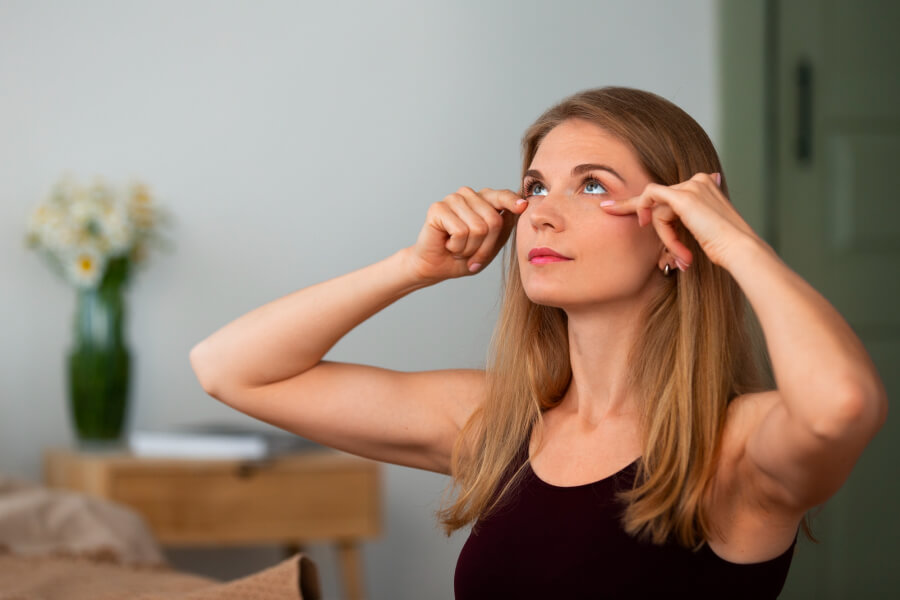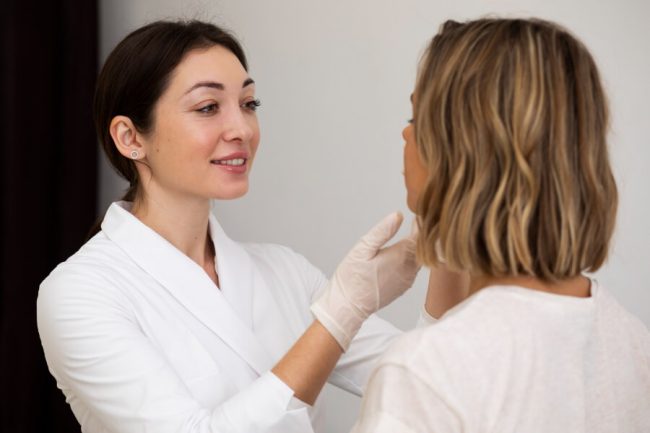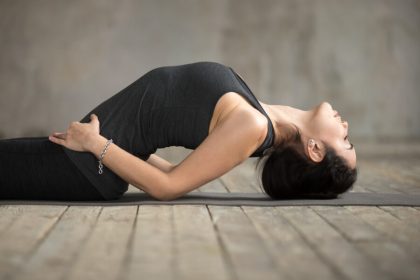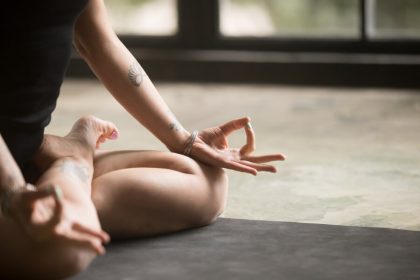The Face Yoga Trend has captured the attention of beauty enthusiasts everywhere. This natural, non-invasive practice promises to reduce wrinkles, tone facial muscles, and refresh the skin, making it a compelling alternative to more invasive treatments.
With the rising demand for holistic wellness solutions, the Face Yoga Trend offers a refreshing approach to anti-aging that doesn’t involve needles or chemicals. The benefits, science, and techniques behind the Face Yoga Trend, along with real-life success stories that showcase its potential are gathered all in one place.
Benefits of Face Yoga for Anti-Aging
The Face Yoga Trend is known for targeting common signs of aging by strengthening facial muscles. Regular practice can lead to noticeable changes, including:
- Reducing wrinkles: by toning facial muscles.
- Improving skin flexibility: making the skin look firmer and younger.
- Increasing blood circulation: results in brighter skin.
- Reducing facial tension: helps prevent fine lines caused by stress.
These benefits have made the Face Yoga Trend an attractive option for those seeking natural anti-aging solutions.
The Origins of Face Yoga
The Ancient Roots of Face Yoga
While the Face Yoga Trend might seem new, its roots can be traced back to ancient wellness practices in cultures like India and Japan.
These societies understood the connection between mind, body, and beauty, confirming that self-care routines such as facial exercises could boost physical appearance and overall well-being.
The Core Principles of Face Yoga for Anti-Aging
The Face Yoga Trend is built on the idea that facial muscles need exercise just like the rest of the body.
By engaging these muscles, face yoga helps lift and tone the skin, resulting in a smoother, more youthful appearance.
Specific poses target areas prone to wrinkles and sagging, such as the forehead, cheeks, and jawline, making the Face Yoga Trend a comprehensive approach to anti-aging.
The Science Behind Face Yoga
How Facial Muscles Are Targeted through Face Yoga
The success of the Face Yoga Trend lies in its ability to tone facial muscles. When these muscles are regularly worked through specific exercises, they become stronger and more defined. As a result, the skin becomes firmer and wrinkles are less notable, creating a more youthful and sculpted look.
The Relationship Between Face Yoga and Collagen Production
Collagen, a protein that maintains skin firmness, decreases as we age. The Face Yoga Trend stimulates blood flow to the skin, which may help increase collagen production over time.
Although more scientific studies are needed, many practitioners report that face yoga has improved their skin’s flexibility and appearance.
Expert Insights on Face Yoga for Anti-Aging
Dermatologist’s POV on the Efficacy of Face Yoga
Dermatologists acknowledge that while the Face Yoga Trend won’t replace medical treatments like Botox, it can provide a natural, non-invasive alternative for those seeking gradual, long-term improvements.
Experts agree that consistently toning facial muscles can improve skin firmness and slow the visible signs of aging.
Yoga Instructor’s Tips on Maximizing Anti-Aging Benefits through Face Yoga Poses
According to yoga instructors familiar with the Face Yoga Trend, consistency is key. Practicing for 10 to 15 minutes each day can lead to significant improvements over time.
They also recommend focusing on mindfulness during practice, as stress reduction plays an important role in maintaining youthful, glowing skin.
Enhancing Self-Love and Confidence through Face Yoga
Beyond its physical benefits, the Face Yoga Trend also has psychological advantages. By dedicating time to self-care, practitioners report feeling more confident and in control of their aging process. This trend encourages not just looking good but also feeling great about one’s natural beauty.
Real-Life Success Stories with Face Yoga
How Face Yoga Transformed Skin and Appearance
Many individuals who follow the Face Yoga Trend share positive experiences, noting firmer skin, fewer wrinkles, and improved facial contours.
While results vary, most practitioners agree that face yoga has made a noticeable difference in their appearance.
Before-and-After Visuals
The transformation achieved through the Face Yoga Trend is often highlighted in before-and-after photos, showing firmer skin, fewer fine lines, and a more youthful glow.
These results reinforce the belief that face yoga when practiced consistently, can deliver significant anti-aging benefits.
Adding Face Yoga to Your Daily Routine
Simple Face Yoga Exercises for Beginners and Advanced
If you’re ready to try the Face Yoga Trend, here are a few simple exercises to get you started:
- Forehead Lift: Place your fingers on your forehead and raise your eyebrows while applying gentle pressure. This helps reduce forehead wrinkles.
- Cheek Lift: Smile as wide as you can and lift your cheeks toward your eyes. Hold for 10 seconds to tone the cheek muscles.
- Jaw Definer: Tilt your head back slightly and push your lower jaw forward. This helps define the jawline and reduce sagging.
Tips for Consistency and Long-Term Results with Face Yoga
- Consistency is the key to success with the Face Yoga Trend.
- Try face yoga in your daily routine either in the morning or before bed.
- Just 10 to 15 minutes a day can lead to lasting results.
- To stay motivated consider tracking your progress through photos or joining online face yoga communities for support.
Maximizing the Anti-Aging Benefits of Face Yoga
Other Skincare Practices to Improve Face Yoga Results
For best results, combine the Face Yoga Trend with a strong skincare routine. Regularly cleansing, moisturizing, and applying sunscreen can help protect your skin and maximize the benefits of face yoga.
You might also consider using facial oils or serums during your yoga practice to improve the smoothing effects.
The Role of Nutrition and Hydration
Proper nutrition and hydration are essential to support the Face Yoga Trend. Eating antioxidant-rich foods like berries and leafy greens can improve skin health while staying hydrated helps maintain skin elasticity. A balanced diet and regular hydration will work in tandem with your face yoga routine to promote youthful skin.
Common Myths About Face Yoga
Separating Fact from Fiction in Face Yoga
The Face Yoga Trend has its share of misconceptions. Some believe that face yoga can completely eliminate deep wrinkles or provide instant results.
While face yoga offers gradual improvements in muscle tone and skin appearance, it is not a quick fix. However, with patience and consistency, it can significantly contribute to a youthful look.
Potential Risks and Precautions Associated with Face Yoga
Face yoga is generally safe for all skin types, but it’s important to follow proper techniques to avoid straining the muscles. Beginners should start with simple exercises and gradually build up to more advanced poses.
Consulting with a face yoga expert or using guided tutorials can help ensure you’re practicing correctly and reaping the full benefits of the Face Yoga Trend.
Conclusion
The Face Yoga Trend offers a holistic, natural way to improve skin tone and reduce the signs of aging. While it requires dedication and consistent practice, the benefits can be significantly firmer muscles, smoother skin, and a more youthful glow.
By adding face yoga to your daily routine, you can take control of your aging process in a gentle, non-invasive way.
FAQs
Can face yoga reverse sagging?
Face yoga can help lift and tone the skin, especially around the jawline and neck, though results depend on consistency and practice.
Is facial yoga better than Botox?
While face yoga offers a natural alternative to Botox, it delivers more gradual results. It’s ideal for those looking for a non-invasive option.
Does face yoga increase collagen?
Although more research is needed, the Face Yoga Trend may promote increased collagen production through improved blood circulation.
Does gua sha and face yoga really work?
Yes, both gua sha and the Face Yoga Trend improve circulation and promote a more youthful appearance, though results vary by individual.







